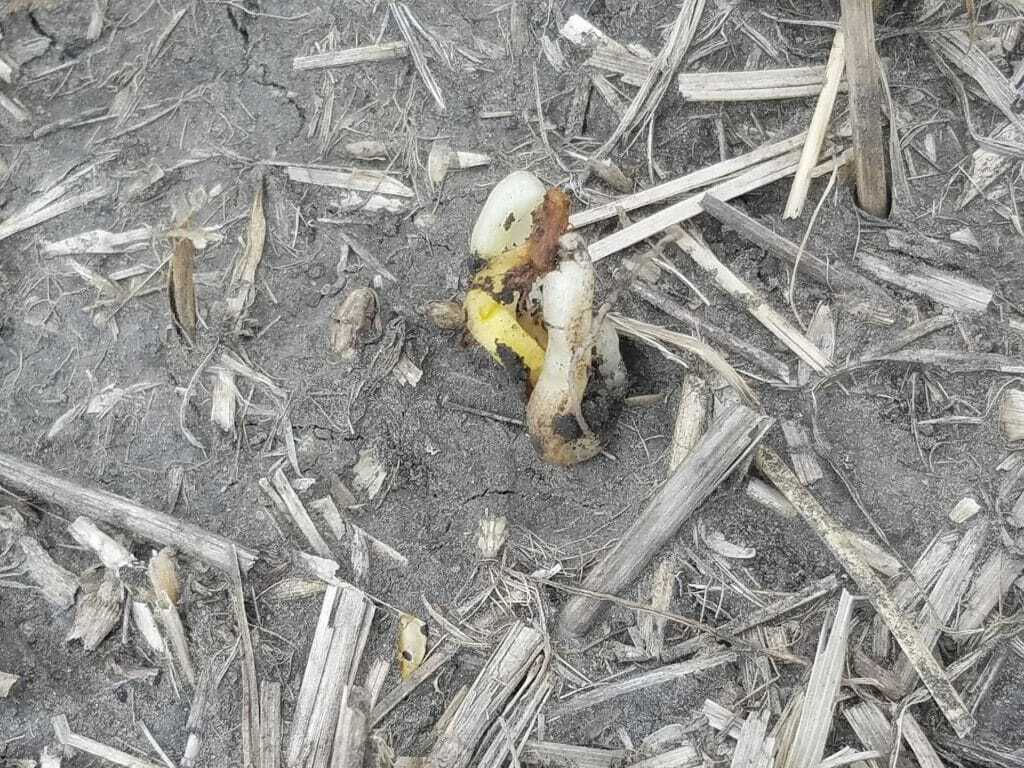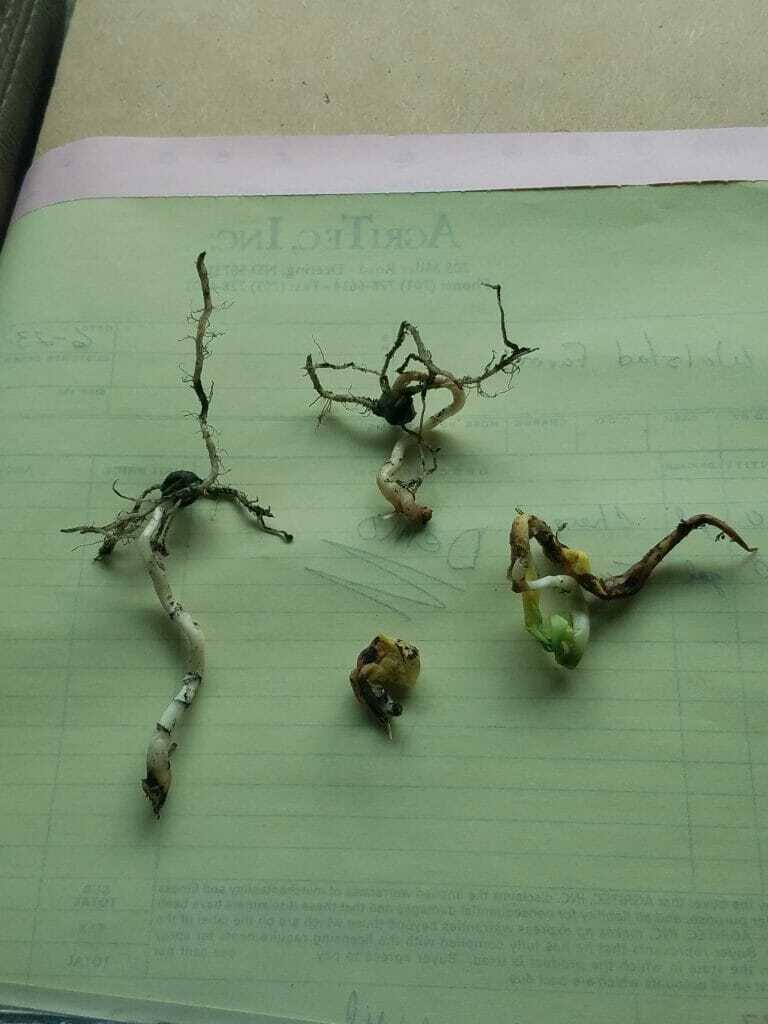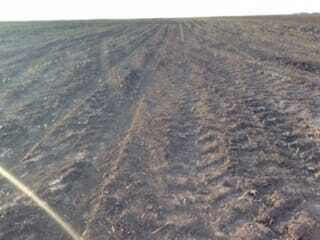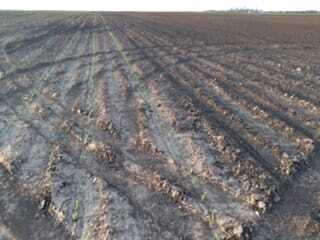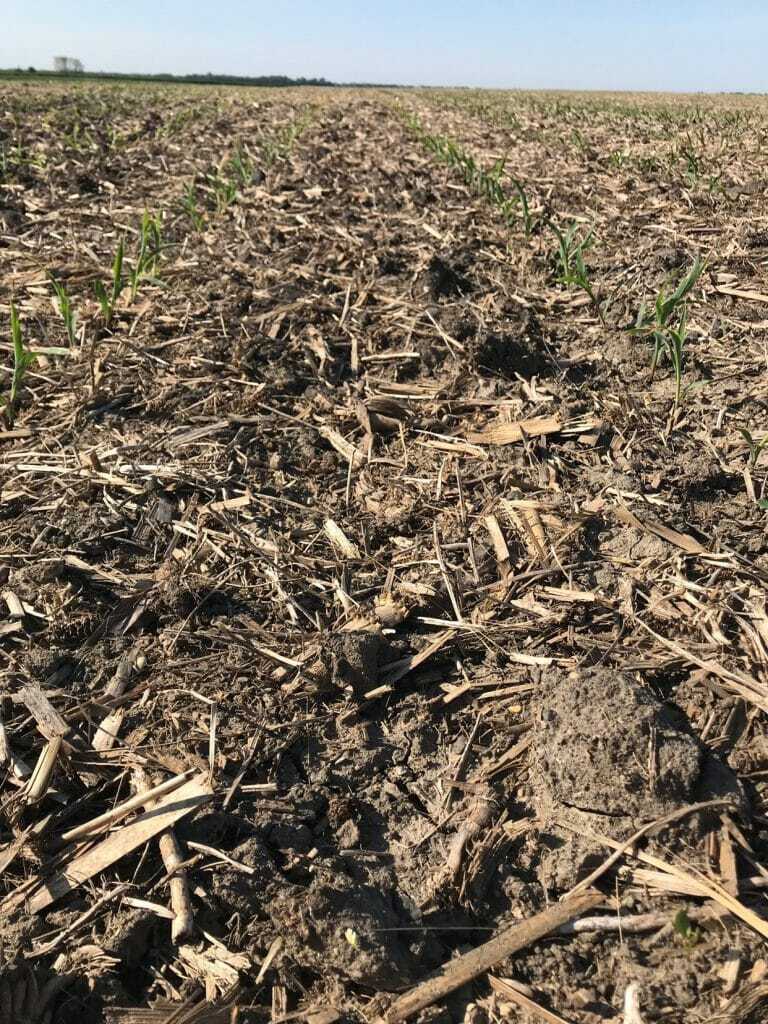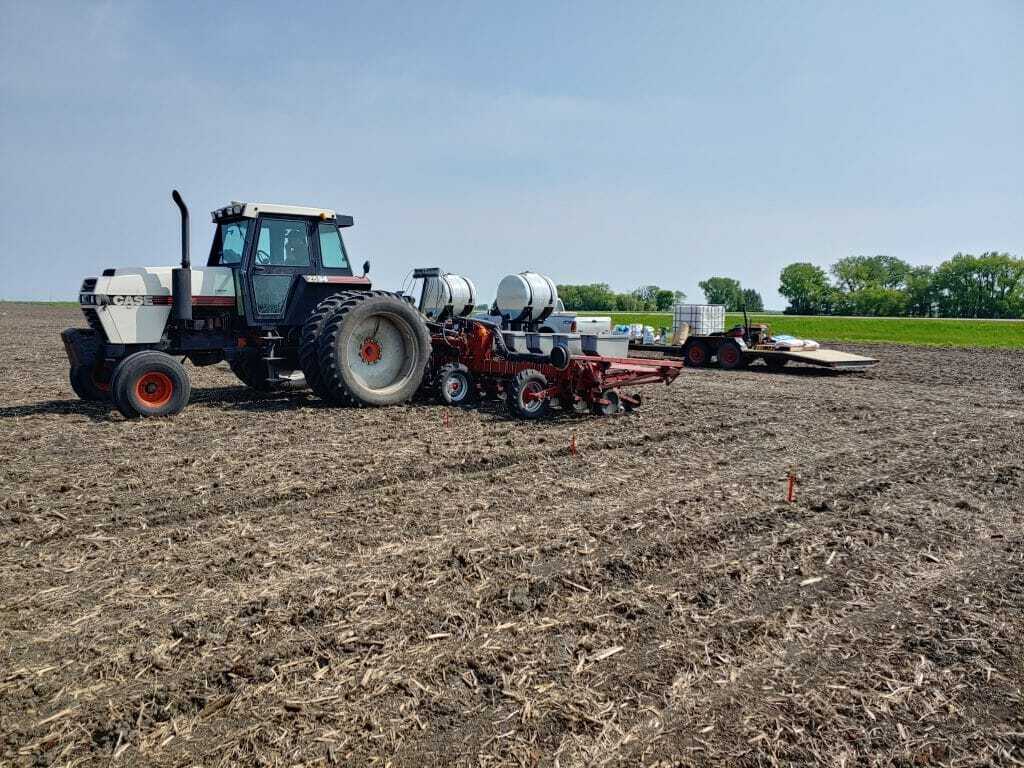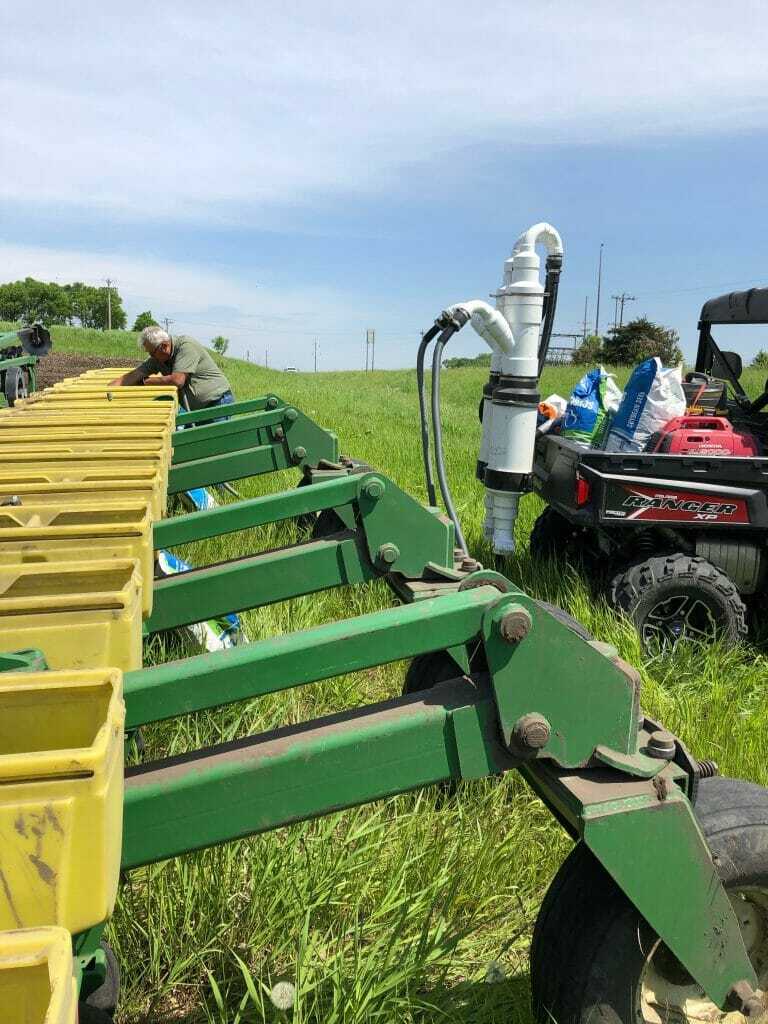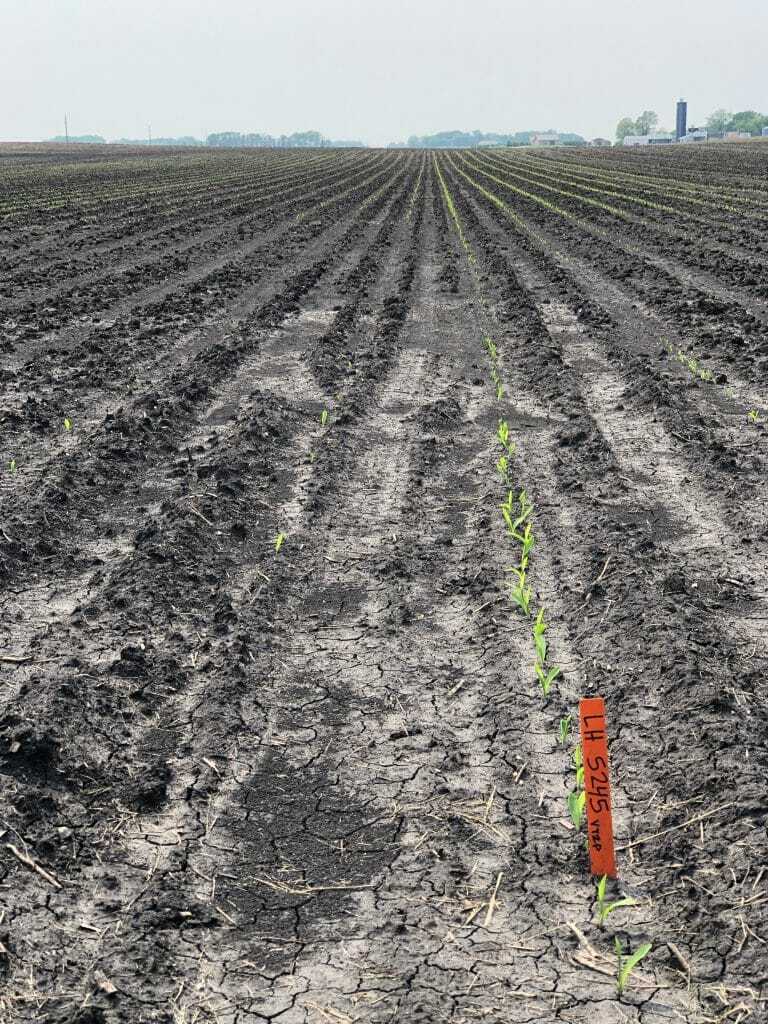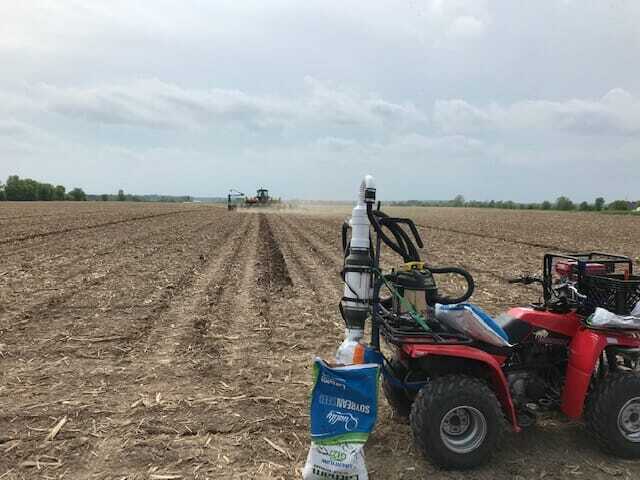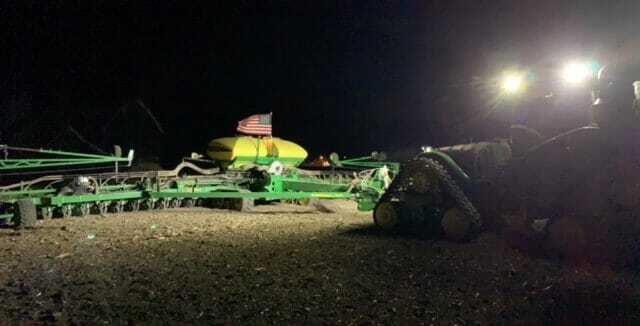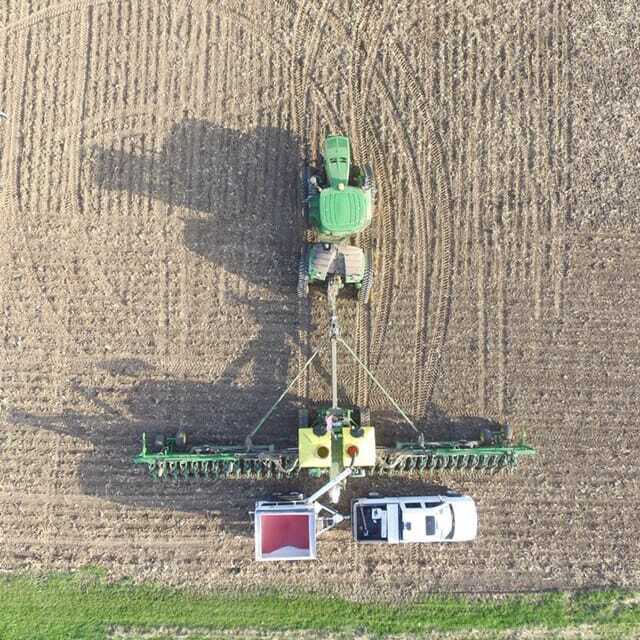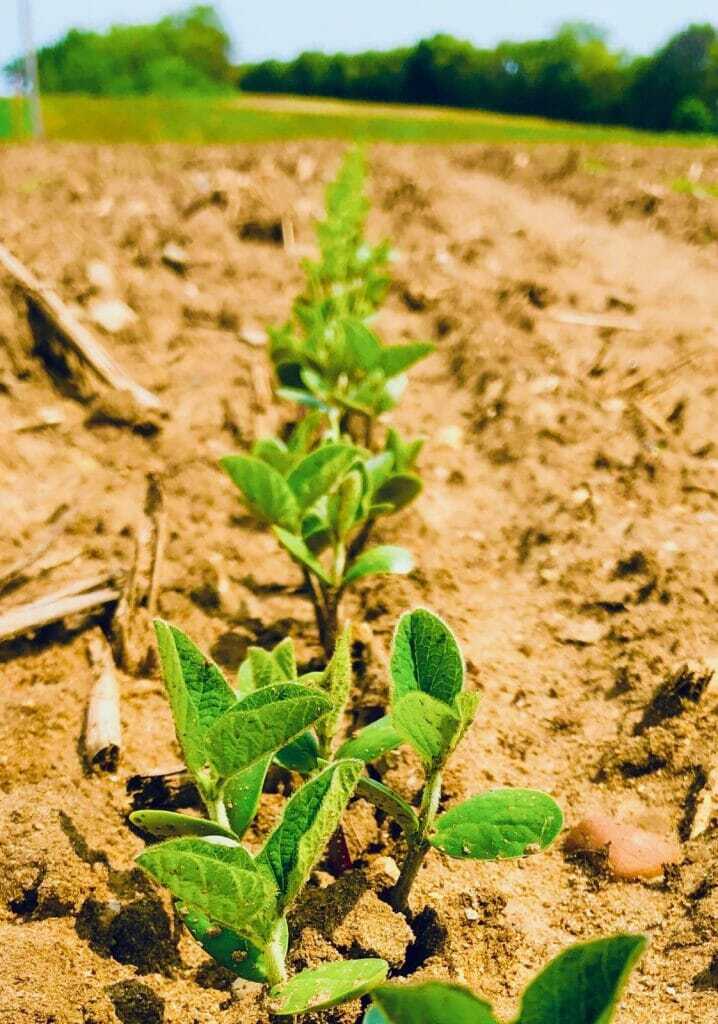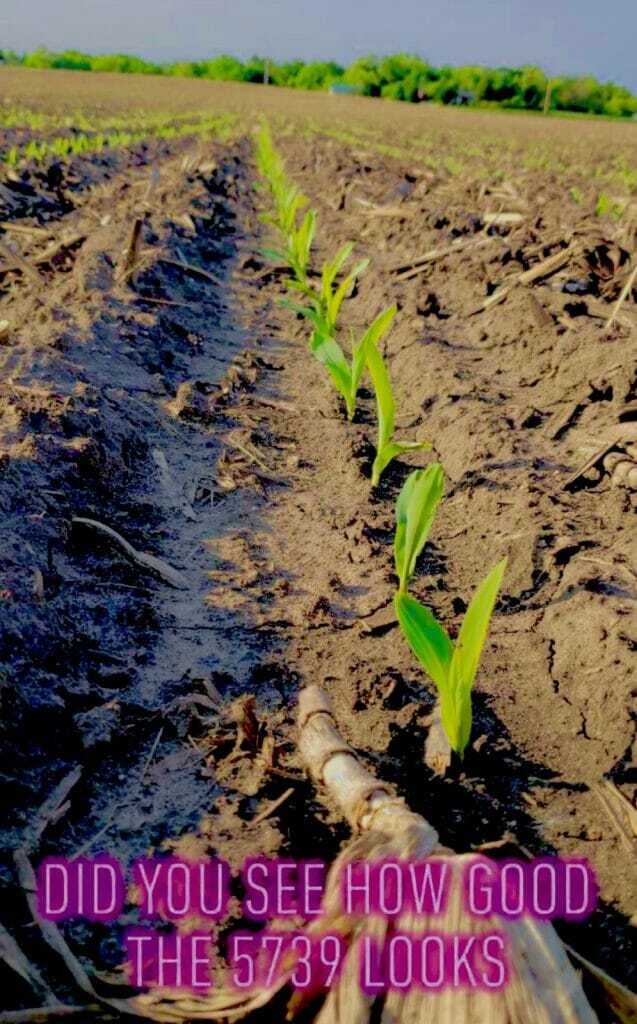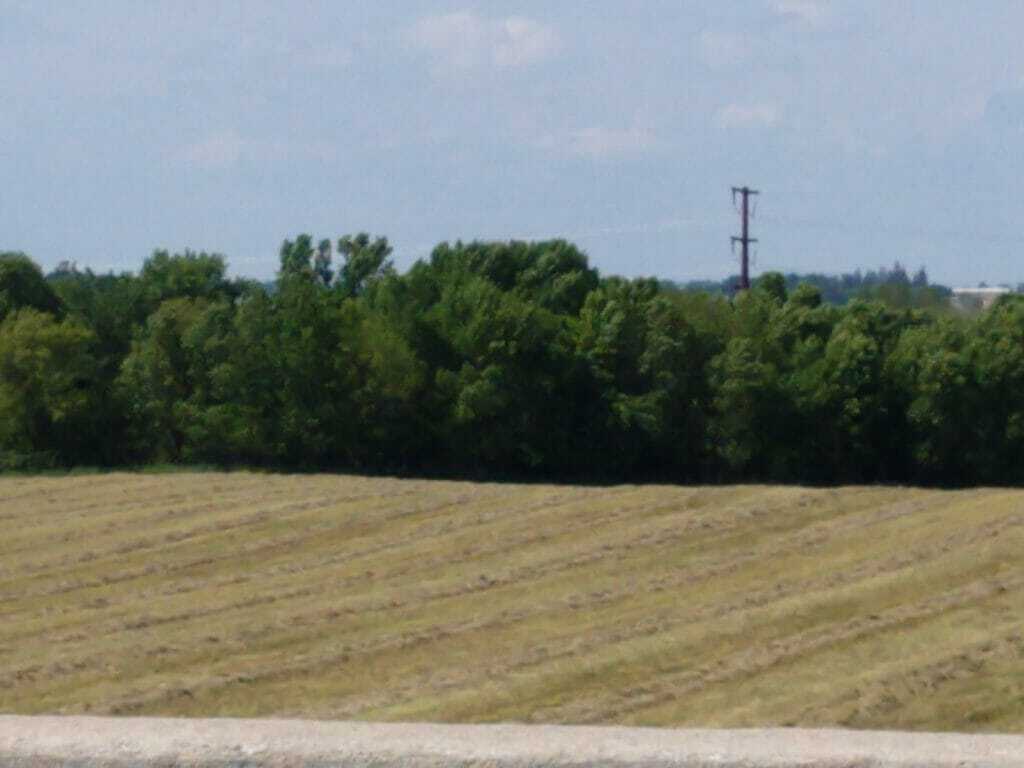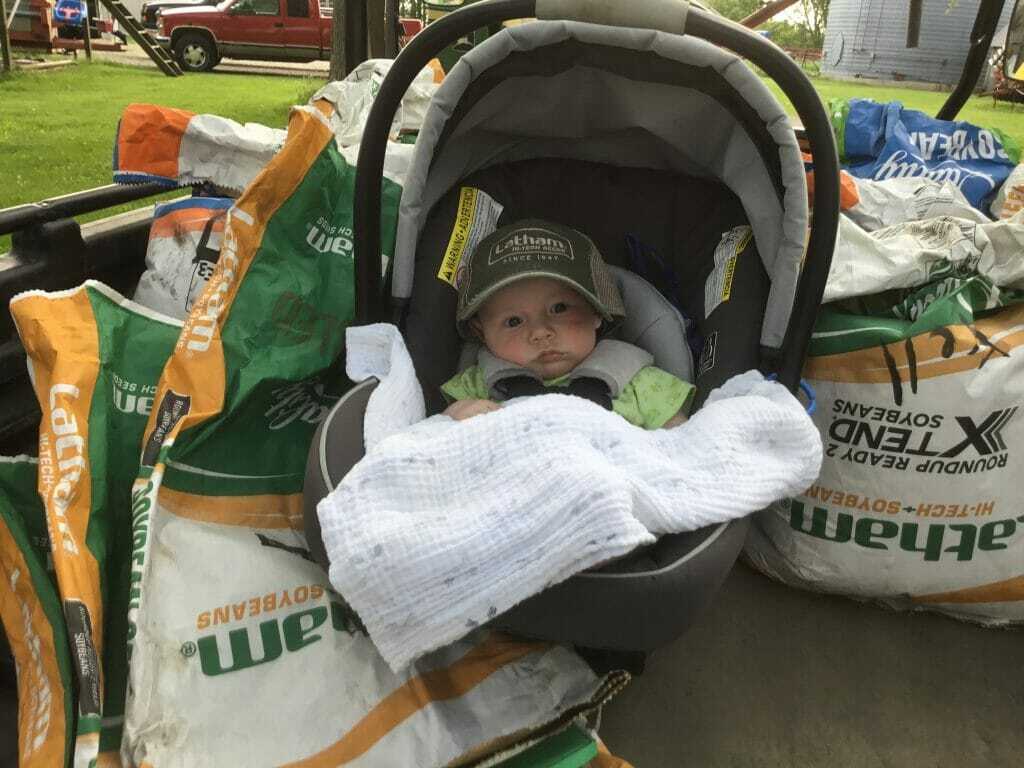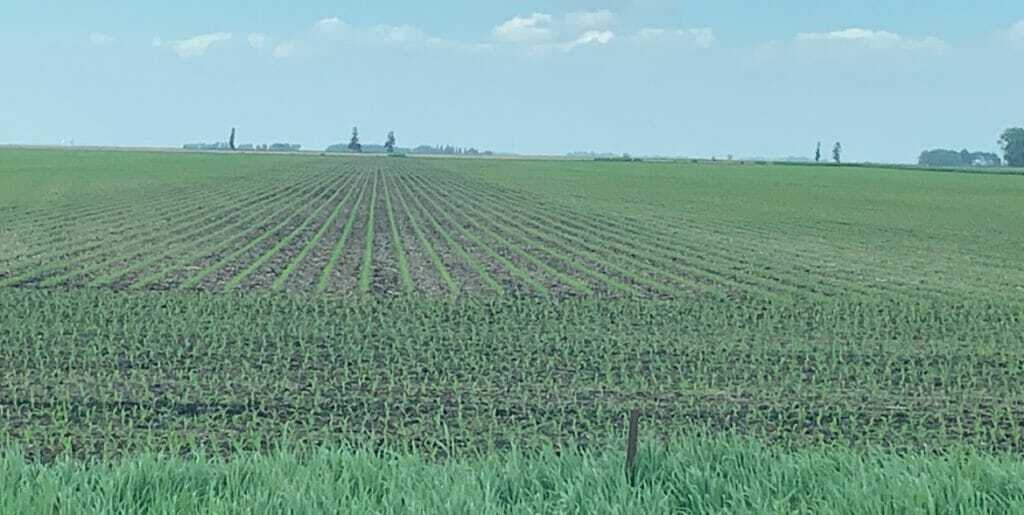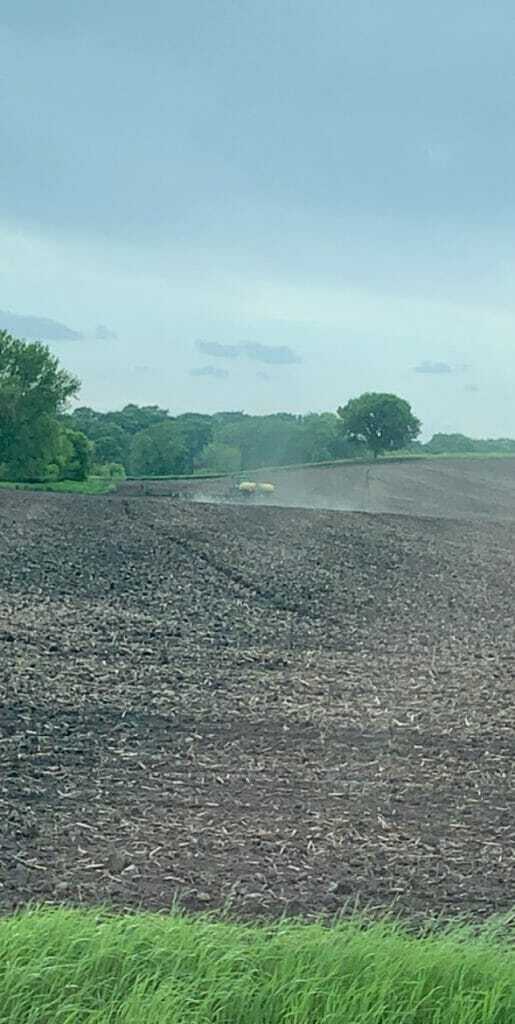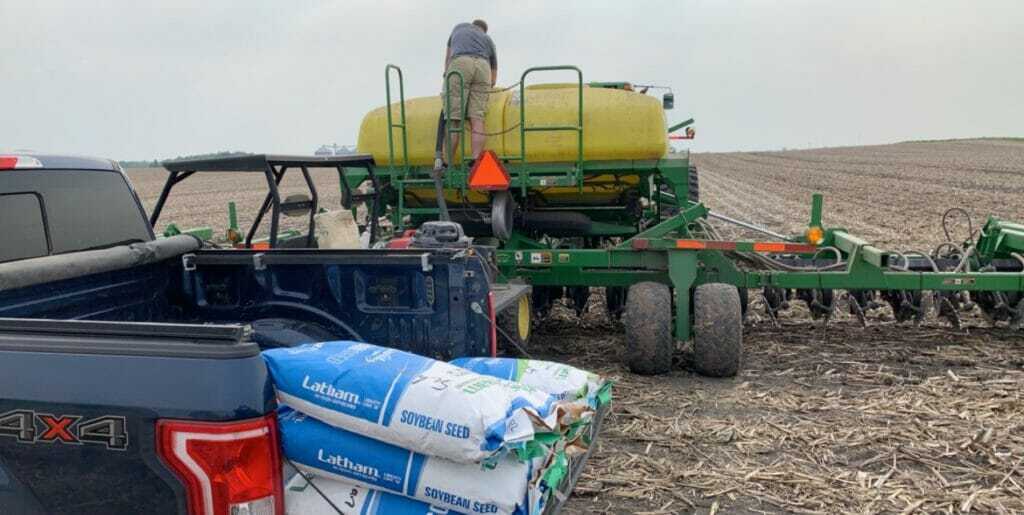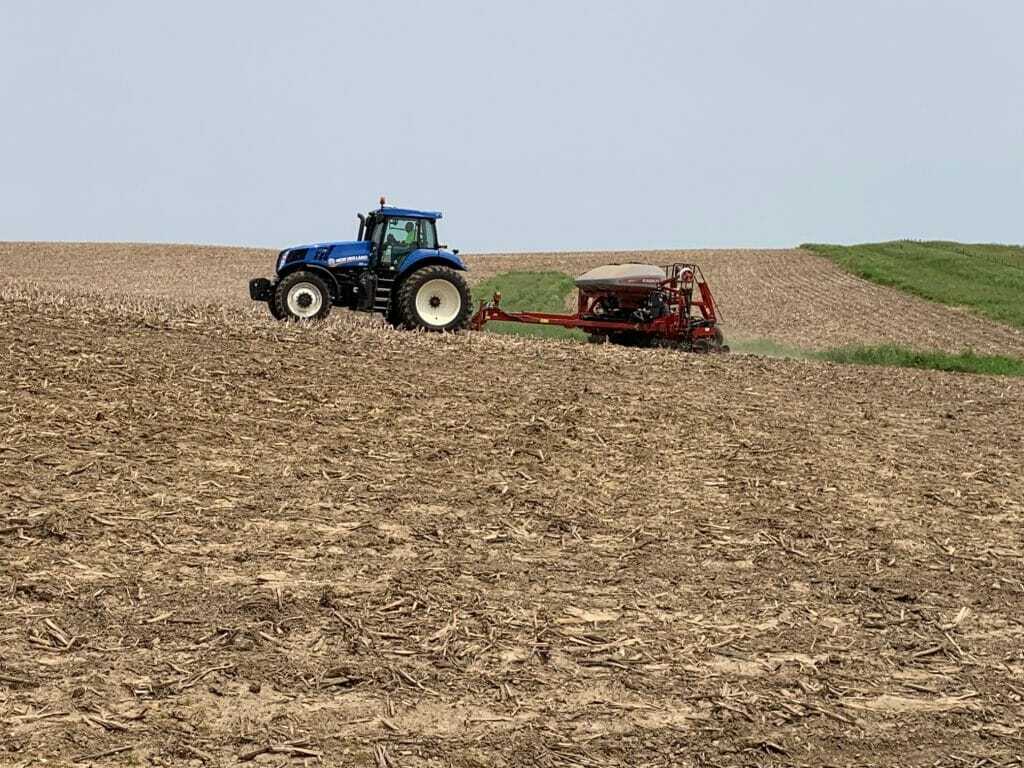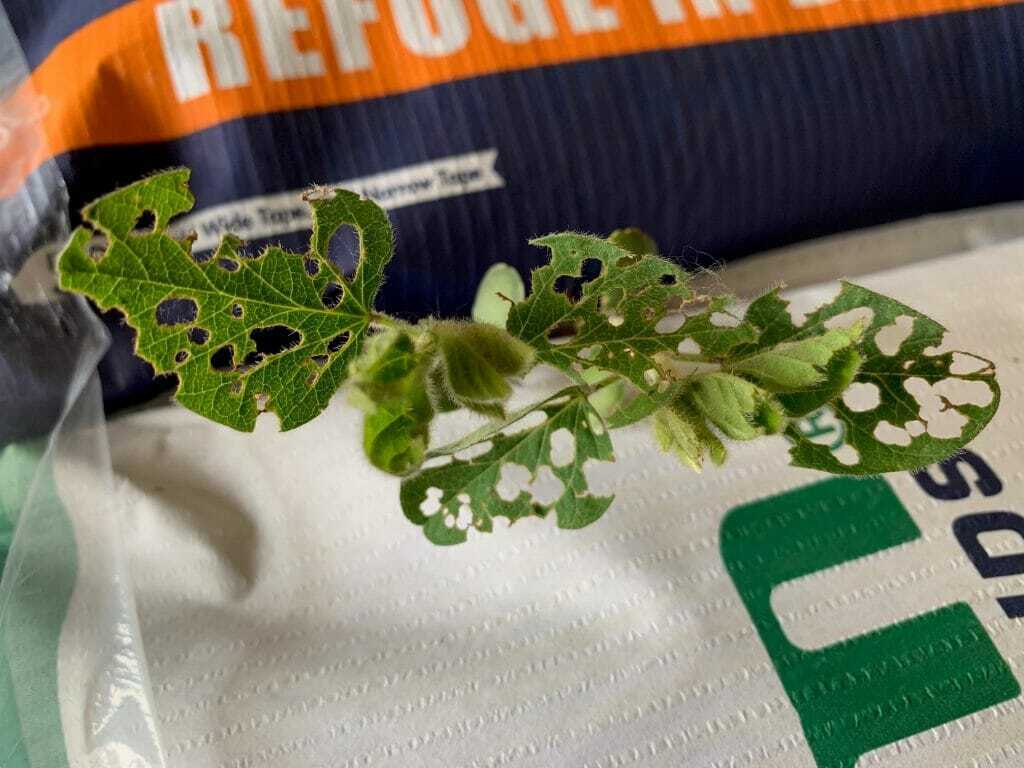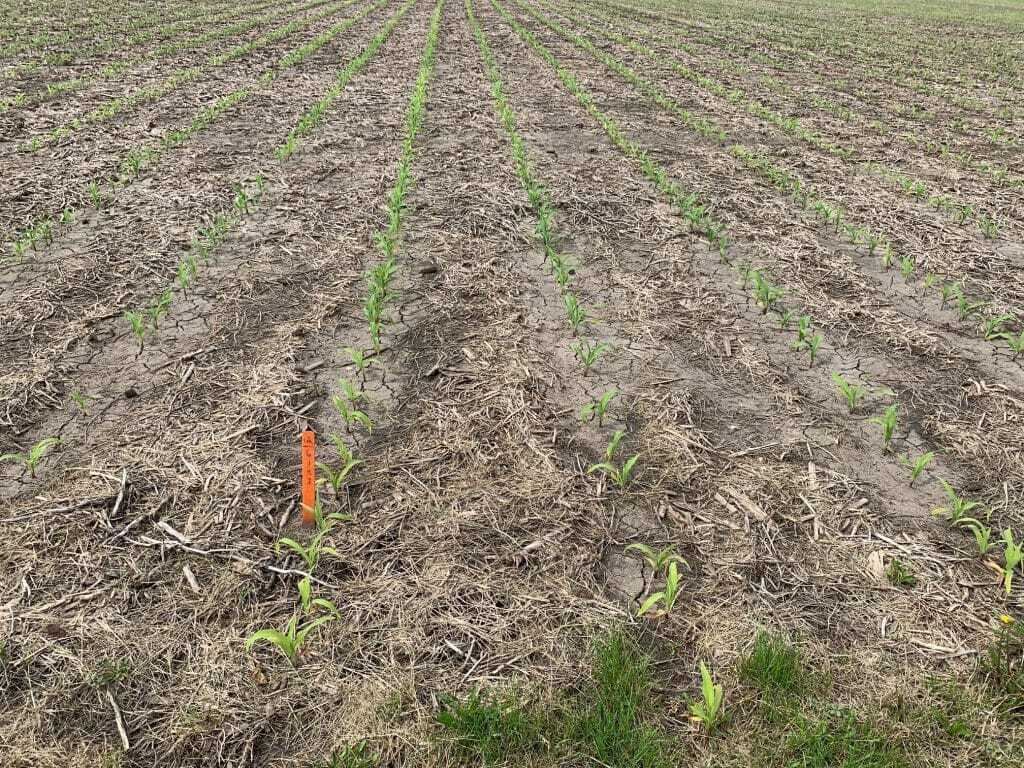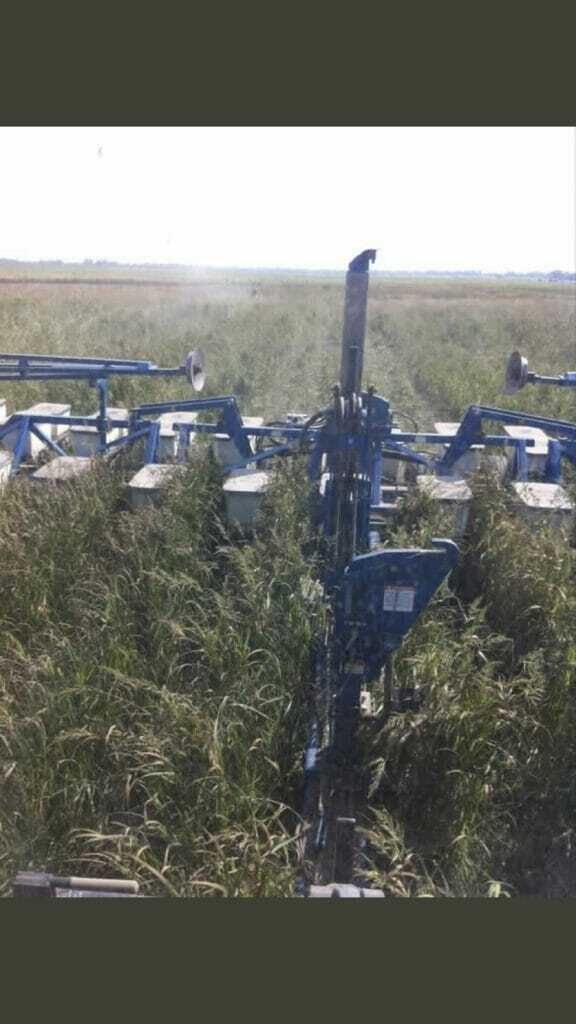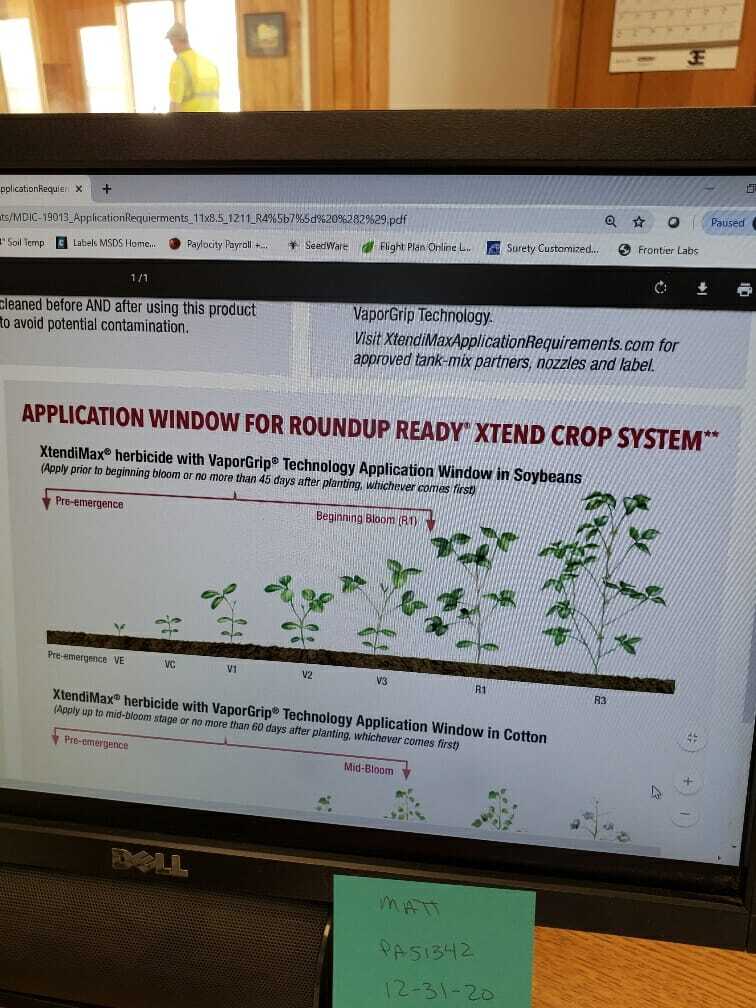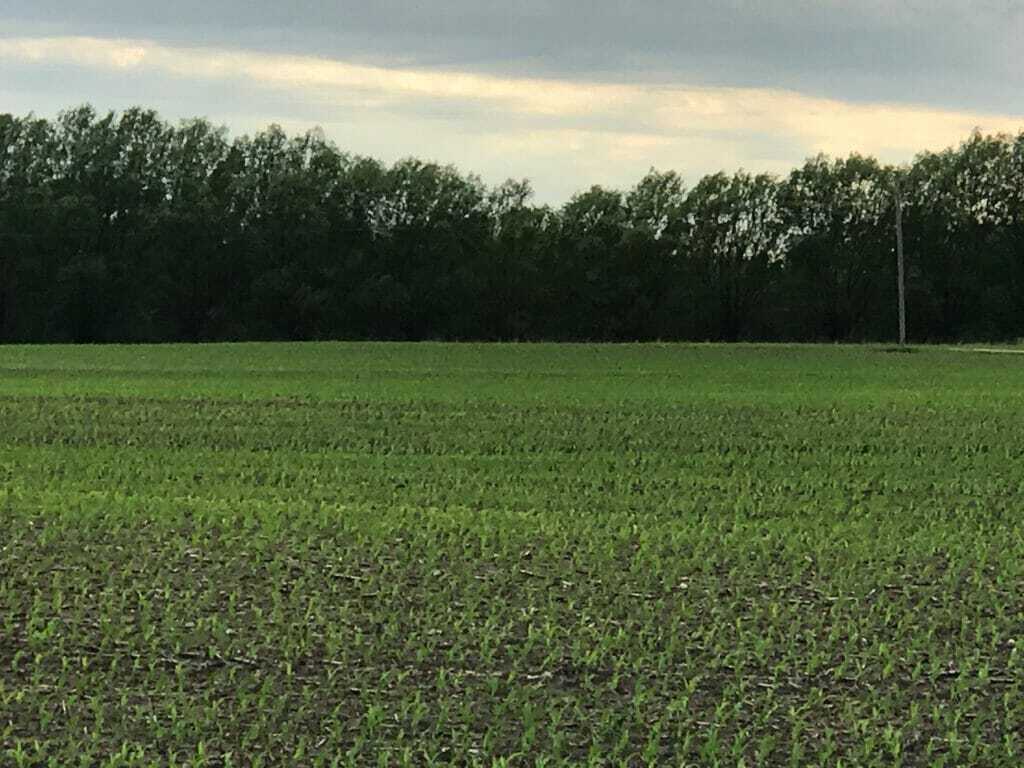June 5, 2019 Crop Reports
Eastern North Dakota
Brian McNamee
I have been spending a lot of time evaluating plant stands in customers’ fields. Planting conditions were less than favorable this year and farmers had to push the limits in the few small planting windows. Corn and soybeans were both planted into wet and cool soils. Many areas have crusting issues causing poor emergence. Farmers are breaking out the rotary hoes in hopes to loosen up the ground. Stand loss of 20 to 35% is not uncommon and unfortunately it is too late for replant.
This have definitely been the most adverse planting year I can ever remember. The good news is that I see about 10 times more sprayers than planters in the field, which means we are moving forward into #grow19.
Southeast North Dakota
Gary Geske
We’re watching a couple issues in corn fields this spring. Early seeded corn is having a tough time getting out of the ground due to cool soils. The hotter temps we had last week created some soil crusting in wet soils, making uneven emergence an issue. Monitor fields daily to verify if replanting is necessary and contact your Latham dealer for hybrid recommendations.
Also fields that have different planting dates make it more challenging to correctly apply herbicides. Scout fields before application to identify hybrid growth staging and size of weeds to be controlled.
Northeast South Dakota
James Keltgen
It has been a busy week in Northeast South Dakota! Finally we have dry weather so farmers have been able to get in their fields. Many farmers are wrapping up corn planting. Many acres won’t be planted due to standing water and time running out. The main focus now is getting soybeans in the ground.
Southeast South Dakota
Ramie Coughlin
While spring planting has been significantly delayed in Southeast South Dakota, the hay/alfalfa crop is on schedule. Farmers are juggling making the first cutting of hay with planting. The good news is that planters are in the fields everywhere. We have finally gotten enough consecutive dry days and warm temps to make it look and feel like spring. Corn plants are emerging, and we can “row the fields” while driving by. Many farmers are pushing to get in as much corn as they can while others have decided to switch from corn to soybeans. We’re hoping for two or more weeks of great farming weather.
Northern Minnesota
Ken Highness
We’re planting a Latham® SuperStrip plot near Tabor, Minnesota. High yield is a desirable characteristic for any hybrid, but there are many more things you can learn. Note how different corn or soybean products respond in an environment that closely mirrors your farm. Get to know each hybrid in your geography as some products may flower earlier or later than predicted. Record how they respond to disease pressure or moisture. Keeping notes like this can help with production selection for the next planting season.
Southern Minnesota
Justin Prokosch
Working on getting Latham® SuperStrips in the ground near Willmar, Minnesota, with local dealer Ed Arndorfer.
Last week, while doing some early season plot evaluations, I noted differences in emergence. Latham’s LH 5245 VT2 PRO stood out as a rockstar, emerging rapidly at Prokosch Farms Corn SuperStrip near Wabasso, Minn.
Northern Wisconsin
Joe Salter
Progress is slow, but it’s progress none the less.
A couple more plots went in the ground the past few days, so there are only a few more to plant. I am excited about all the plot locations and where the future is headed!
All these SuperStrips™ will help our team choose the right hybrids and varieties for Northern Wisconsin. There are still a lot of acres to get planted. Farmers in the western part of my region are finishing, but those in the eastern part are struggling to get going due to weather conditions.
Southern Wisconsin
Greg Mair
Farmers are working long hours to make the most of the field conditions that are fit to plant. We’re praying we miss the rainfall on Tuesday night, so we can finish planting corn this week before transitioning to soybeans. We got three soybean plots planted last week to get some side-by-side data on Enlist® Soybeans in southern Wisconsin.
L 2486 L soybeans only took eight days to emerge and are looking great.
LH 5739 SS planted May 15 is off to a great start in Cambridge.
North Central Iowa
Cory Greiman
Many farmers are harvesting their first cutting of hay in North Iowa.
Northeast Iowa
Craig Haaland
My assistant and I had everything under control! We put in a SuperStrip™ plot early this week in Steele County, Minnesota.
There hasn’t been much action this past week due to wet fields. A few farmers were able to start planting again Sunday, and it appeared that everyone was rolling by Monday. Some remaining corn and a lot of soybeans went in the ground early this week. Overall, the corn has emerged and the stand looks really good at this point. A few fields of soybeans have emerged.
Some farmers got out rotary hoes to break up crusting soils.
Northwest Iowa
Darin Chapman
Planting in Northwest Iowa has progressed with some much needed sunshine. Corn that was planted around May6 looks good. You can see LH 5245 VT2 PRO RIB has great potential!
Eastern Iowa
Jerry Broders
We were fortunate to pick up planting again on Sunday in Eastern Iowa. We checked on some early planted soybeans and found some feeding from soybean beetles. Make sure to scout your early planted soybeans. Corn plots are coming along well.
Western Iowa
Larry Krapfl
Jordon Brewer and Matt Topf are planting soybeans into rye.
West North Central Iowa
Bart Peterson
Below is a friendly reminder on the appropriate window to spray Xtend® soybeans. For more information, click here.
Central Iowa
Bryan Rohe
Corn is 99% planted and soybeans are 75% planted in Central Iowa. Stands are looking better than expected, considering all the crop stress. Corn plants across the region have yellow spots where corn is either lacking sunlight or nitrogen.
